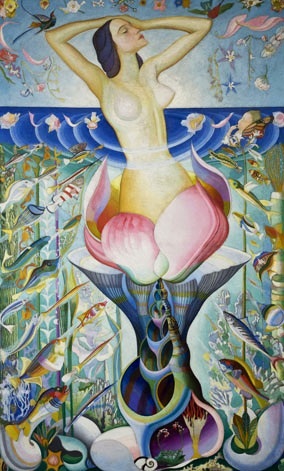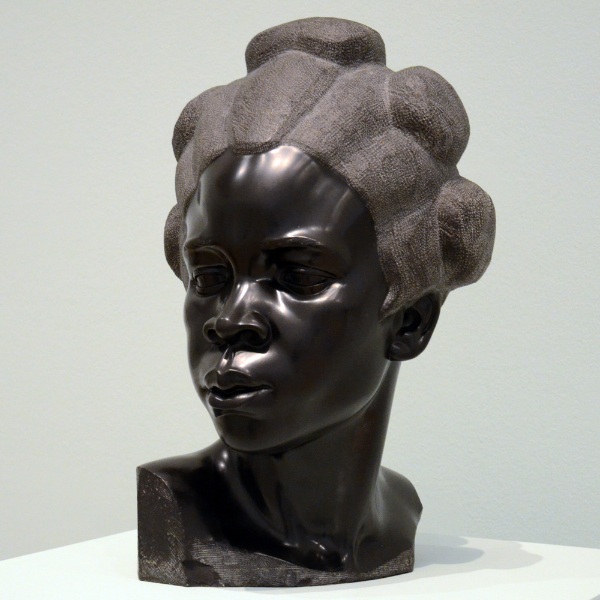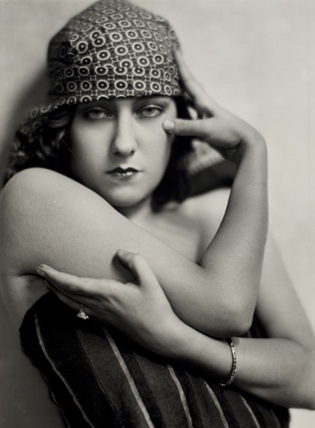 The New York Times called the current exhibition at the Dallas Museum of Art "expansive and exhilarating". With over 130 sculptures, photographs and paintings to view from sixty-seven artists, each piece is from the decade that followed the conclusion of World War I and came to an abrupt end with the 1929 Bank Crash- The Twenties.
Whether they are referred to as the Roaring Twenties, The Golden Twenties, The Jazz Age, The Machine Age or something of the like, this period was one of social, artistic, and cultural dynamism. The changes were first felt in major metropolitan centers across the globe, such as Paris, Chicago, New York, Philadelphia and Berlin. There was unprecedented industrial growth which led to significant and historical changes in lifestyle and culture. It was a boom of technology, urbanization and industrialization; with motion pictures, telephones, electricity and the automobile rooting and spreading rapidly across the world. The spirit of the Twenties was one of breaking traditions and fueling modernity. It was a time when everything seemed attainable with the use of modern technology. If man could dream it, he could build it. If there was a dilemma, mankind and machinery could solve it.
The New York Times called the current exhibition at the Dallas Museum of Art "expansive and exhilarating". With over 130 sculptures, photographs and paintings to view from sixty-seven artists, each piece is from the decade that followed the conclusion of World War I and came to an abrupt end with the 1929 Bank Crash- The Twenties.
Whether they are referred to as the Roaring Twenties, The Golden Twenties, The Jazz Age, The Machine Age or something of the like, this period was one of social, artistic, and cultural dynamism. The changes were first felt in major metropolitan centers across the globe, such as Paris, Chicago, New York, Philadelphia and Berlin. There was unprecedented industrial growth which led to significant and historical changes in lifestyle and culture. It was a boom of technology, urbanization and industrialization; with motion pictures, telephones, electricity and the automobile rooting and spreading rapidly across the world. The spirit of the Twenties was one of breaking traditions and fueling modernity. It was a time when everything seemed attainable with the use of modern technology. If man could dream it, he could build it. If there was a dilemma, mankind and machinery could solve it.
Views shifted and roles changed. The 19th Amendment, passed in 1920, gave women the right to vote. Women attained political equality that gave rise to a new mentality towards a woman's role. The woman of the Twenties was in tune with the capitalistic spirit of the time. Many began to desire success in the wider world and looked to careers outside the home. Fashion became a way for the young and rebellious to express themselves, this was immortalized in movies and on the covers of magazines. Labeled "flappers" by the older generations, young women threw out the corset and wore loose dresses that exposed their arms and legs; scandalous. They cut their hair short and wore makeup. Until that time, the use of cosmetics was usually associated with prostitution.
Many formerly unquestioned societal values began to shift. Tolerance grew towards "outsider" groups and minorities. On the stage and in movies blacks and whites appeared together for the first time. Homosexuality gained a strong foothold of social acceptance. Dance clubs became extremely popular. It was an era of great change; there is no doubt about it.
Artists observed and embraced the progressive changes happening around them, and then they reacted. Artists incorporated and encapsulated the social milieu of the times in their work. The current exhibition at the Dallas Museum of Art, Youth and Beauty: Art of the American Twenties shows what the artists who witnessed this groundbreaking era addressed. They created images of the urban-industrial environment and liberated human forms. They approached their subject matters with celebration and new liberation of freedoms that pushed the boundaries of the past. Cities and landscapes were reduced to clean and smooth geometric works that are as calming and serene as they are bold and dynamic. Portraits, done on canvas, through photography and as sculptures, became close-ups that celebrated sexuality and the intimate. This show, organized by The Brooklyn Museum, takes the viewer and drops him into the machine culture of the 1920’s with the works of numerous well-known artists, including Edward Hopper, Georgia O’Keeffe, Edward Weston, Alfred Stieglitz, Thomas Hart Benton, Charles Demuth and others.
I was pleasantly surprised by the exhibition. Upon going to view the show, and reading a bit about it, I wasn’t really jumping out of my skin to attend. But, it blew me away. Although the artists' styles and subjects are disparate, taken together, this group of works gives a sense of the complex, diverse social context of the 20's. Smooth, clean lines, defined shapes with heavy outline, bold and stark color palettes, the human form, sexuality, movement and dance, racial issues, women’s issues, music, modernism . . . each artist has his or her viewpoint, his own angle. All of these diverse subjects come together to sum up the beauty, anxiety and dynamism of the jazz age.
“Night Window” by Edward Hopper stopped me mid-step as I turned the corner into one of the many rooms in the exhibition space. This is a stunning work by Hopper. The oil on canvas, done in 1928, is from the viewpoint of one looking in the window of an apartment at a solitary woman. The light from the three windows glows brightly and the outdoor architecture is in deep shadow. Lace curtains billow out of one window. The figure is observed in a sad, voyeuristic manner, going about the mundane details of her life. Hopper has a way of pulling his audience into his works while keeping them at bay only as the audience. One is only permitted to observe, not interact. In the room with her thoughts, the woman is unaware of the spectator. Though she and the viewer exist together for a moment, they are entirely separate from each other.
The huge oil on canvas “The Birth of Venus” by Joseph Stella done in 1925 was another highlight. The psychedelic piece is great in its vibrant colors and movement as it points back to the iconic Botticelli painting of the same name and reinterprets the subject for a modern generation. The large nude Venus figure is standing in a blossoming flower, her hands stroking back her long dark hair with her eyes closed. Botticelli's Venus is depicted demurely covering her nudity, about to be fully draped by an attendant, whereas Stella's model seems to languidly relish her sexuality. The partly underwater scene full of bright pastels and sugary colors, advocates the sharpness and liberty of sexuality in flapper culture. This piece is found in the section of the exhibition called ‘Body Language: Liberation and Restraint in Twenties Figuration’. The works in this section are expressions of the human body in natural form, the bodies depicted as both carefree in their own skin and strikingly sensual in their natural beauty.
"Martinique Woman" done in 1928 by Malvina Hoffman was one of the sculptural pieces that stole the show. The black metamorphic stone is an oversized portrait head of an African woman, which was the result of the artist's many travels through Africa.
Its large scale with the woman's gaze and tight expression gives her a feeling of heroism. Hoffman's choice of subject challenges earlier depictions and use of African subjects. The sculpture itself is stunning in execution, Hoffman's choice to work in-the-round and in a larger-than-life scale is accentuated by the sculpture's both polished and textured surfaces that lend a presence of drama and power to the piece one can experience when viewing.
Portraits played a large role in the art of the 1920's as artists responded to the advertising of magazines, movies and posters. An iconic photograph of Gloria Swanson shot by Nickolas Muray, shows the film star's bare arms wrapped in front of her upper torso with a hand framing her face.
This pose speaks of the era's approach to the female figure as sensual and beautiful, as well as the decade's growing fascination with celebrity culture. The twenties appreciation for the pure form of the body is again reinvigorated in the portraiture of the exhibition.
With over 130 pieces, the show just keeps going. There are great still life pieces including Georgia O'Keeffe's "Two Calla Lilies on Pink", Henrietta Shore's "California Data", and the pre-pop and almost billboard-like works of Gerald Murphy. There is a whole room filled with paintings of industry, skyscrapers and factories that steamed the era forward. The great vertical by Elsie Driggs, "Queensborough Bridge" is one of my favorites in this section.
Overall, Youth and Beauty is a great exhibition showcasing a dynamic time in our history. The audience really can experience a glimpse of the time period as they walk through the gallery space. It was a bit kitsch that the chapter galleries have tacky titles ("Silent Pictures" for a gallery filled with paintings of industry and machine...?). However, that is a small complaint. The exhibition is absolutely worth catching while it is still in town.
Youth and Beauty: Art of the American Twenties will be at the Dallas Museum of Art until May 27th, 2012.
M.P.Callender Signet Art




